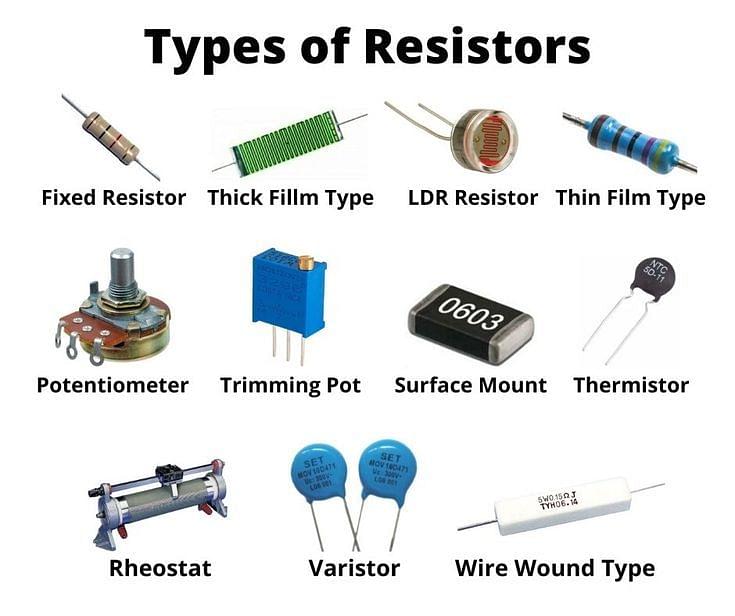Types of Resistors

Resistors are electronic components designed to introduce a specific amount of resistance into an electrical circuit. They come in various types, each with its own characteristics and applications.
Here are some common types of resistors:
-
Fixed Resistors:
- Carbon Composition Resistors: Made of a mixture of carbon and ceramic, these resistors are inexpensive and widely used.
- Metal Film Resistors: Constructed by depositing a thin film of metal (usually nickel-chromium) on a ceramic substrate, providing greater stability and precision compared to carbon composition resistors.
- Metal Oxide Film Resistors: Similar to metal film resistors but with a metal oxide film, offering better performance at high temperatures and in humid conditions.
-
Variable Resistors:
- Potentiometers (Pots): Adjustable resistors with three terminals, allowing the resistance to be varied manually.
- Rheostats: Variable resistors with only two terminals, commonly used to control current in a circuit.
-
Specialized Resistors:
- Wirewound Resistors: Constructed by winding a wire around an insulating core, providing high precision and power handling capabilities.
- Fusible Resistors: Designed to act as both a resistor and a fuse, protecting the circuit from excessive current.
- Light-Dependent Resistors (LDR): Also known as photoresistors, their resistance changes with varying light levels.
- Thermistors: Resistors with a resistance that is highly dependent on temperature. Negative Temperature Coefficient (NTC) thermistors decrease resistance with temperature rise, while Positive Temperature Coefficient (PTC) thermistors increase resistance with temperature rise.
- Varistors: Voltage-dependent resistors that protect circuits from overvoltage conditions by dynamically changing their resistance with applied voltage.
-
Surface Mount Resistors (SMD):
- Chip Resistors: Compact resistors designed for surface mount technology (SMT) applications, where components are mounted directly onto the surface of a printed circuit board (PCB).
-
Network Resistors:
- Resistor Arrays: Multiple resistors arranged in a single package, often used in applications where precise matching of resistance values is required.
-
Power Resistors:
- Wirewound Power Resistors: Designed to handle higher power levels and dissipate more heat.
- Thick Film Power Resistors: Similar to wirewound resistors but with a thick film of resistive material.
-
High-Frequency Resistors:
- Carbon Film Resistors for RF Applications: Designed to minimize parasitic capacitance and inductance for use in high-frequency circuits.
When selecting a resistor for a particular application, factors such as resistance value, tolerance, power rating, and temperature coefficient must be considered. The appropriate resistor type depends on the specific requirements of the circuit and the conditions in which it will operate.
Thank you.
